This post may contain references or links to products from one or more partners of our parent company and/or subsidiaries of our parent company. For more information, visit this page.
Updated May 13, 2021
Flooring: it’s not just for indoors! Putting down flooring can add utility and enjoyment to any outdoor area. But with so many types of flooring out there, you may be wondering which outdoor flooring options are the best for your needs.
The truth is, there’s no one type of flooring that’s perfect for everyone. So we’ve put together this side-by-side comparison of 15 outdoor flooring options to suit every need.
We’ll talk about timeless hardwood and hardwood floor alternatives; we’ll talk about beautiful tiles, we’ll talk about durable man-made composites—and even some often-overlooked options like plants and rubber. With this comprehensive list, you’ll have no trouble finding the best outdoor flooring options around. Let’s get started!
#1. Hardwood: Timeless and Traditional
Don’t call it a comeback—traditional wood decking has been here all along, and it’s here to stay. There are tons of types of wood flooring that can be used outdoors for that classic “baseball and apple pie” backyard look.
Some common woods used as outdoor flooring options in the United States include:
- Redwood
- Western Red Cedar
- Cypress
Sure, wood flooring costs can sometimes become expensive. But if you’re willing to invest, there are a number of top-of-the-line exotic hardwood species that can also make great outdoor flooring options, like ipe (pronounced ee-pay, also known as Brazilian walnut), teak, and mahogany.
Just remember: wood-based outdoor flooring options must be treated
Even the most durable wood flooring will only hold up if it’s been properly treated to withstand the elements. Treating wood helps it to resist rot and warping, and can prolong the lifespan of your outdoor flooring over time.
If you’re buying a hardwood floor for the outdoors, it should be treated before installation and cleaned and sealed every one to two years. After all, there’s no point in learning how to install hardwood floors if they’re just going to get ruined in a few seasons.
#2. Composite Decking: A Long-Lasting Hardwood Floor Alternative
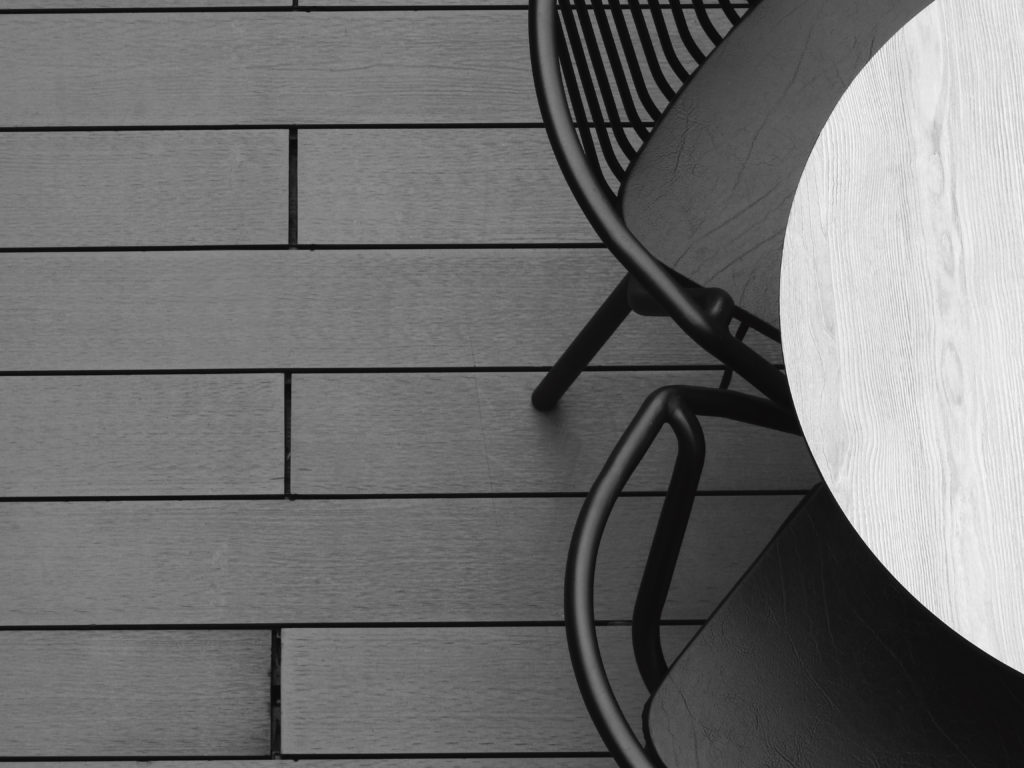
Does the idea of creating gorgeous wood floor designs in your backyard fill you with delight? Of course. Does the idea of doing annual cleaning and sealing fill you with dread? Obviously. That’s why we’re pleased to introduce composite decking. This may just be the perfect fake wood flooring to suit your needs.
What is composite decking? What makes it better than other outdoor flooring options?
Composite decking is a man-made material composed of thermoplastic resins, wood flour (a super-fine sawdust), and wood fiber. Is composite decking better than the best hardwood floors that are made of real wood? That depends on what you’re looking for.
Composite decking is similar to many of the best types of vinyl flooring, but it includes wood by-products as well as plastics. It’s hard and nonporous, meaning it resists rot and the elements. It may also be less expensive than traditional wood. Just like some of the best engineered wood flooring, many types of composite decking come in a click-together flooring configuration—making for a quick and easy installation.
On the other hand, its nonporous surface doesn’t allow paint or stain to adhere well, so choose your design wisely. As long as you choose a color and style you like, however, this outdoor flooring option will continue to look fresh and pristine for years to come.
Best Brands of 2024
#3. Outdoor Carpeting: A Great Outdoor Flooring Option for Barefoot Lounging
There’s nothing quite like swaying in a porch swing or kicking back in a rocker on a nice day. If you want to take your porch to the next level in comfort, consider adding carpet! If you’re ever debated carpet vs. laminate flooring, you already know that carpet offers unbeatable comfort underfoot. With easy and affordable options like the peel-and-stick carpet tiles Home Depot sells by the crate, you can even install them yourself—and trust us, learning how to install carpet tiles is a snap.
Outdoor carpet is not the same as indoor carpet
Are you choosing between carpet vs. hardwood for the outdoors? If so, you may be thinking “how in the world is carpet going to last outside?” Unlike the plush, high-pile carpet you might find inside the home, outdoor carpeting is often a durable low-pile carpet type, similar to what you’d find in an office or school building. Just be warned: despite its durability, this outdoor flooring option may need to be replaced sooner than some of the others on this list—and it’s best in drier climates.
#4. Ceramic Tile: Versatile and Low-Maintenance
We love tile for so many reasons, it would be ridiculous to try and list them all here. There’s so much to love! If you’re comparing a tile vs. wood floor, you’ll love tile’s water-resistant advantages. In terms of budget, ceramic tile can be more affordable and cost less to install than wood or natural stone. And when it comes to tile vs. laminate, if you’re looking for longevity, ceramic tile is the clear frontrunner.
Remember: temperature changes can affect ceramic tile flooring
It’s important to note that ceramic tile has some limitations. Very low temperatures can cause ceramic tile to crack, so talk to a local flooring retailer to see if tile is a good fit for your location—they’re the experts, after all. Also, don’t forget to ask them about the slip resistance, (aka the coefficient of friction) for whatever types of flooring you’re considering. Ceramic tile can be slippery when wet, so it’s not ideal for pool areas or places where kids run and play.
#5. Natural Stone: Full of Natural Beauty
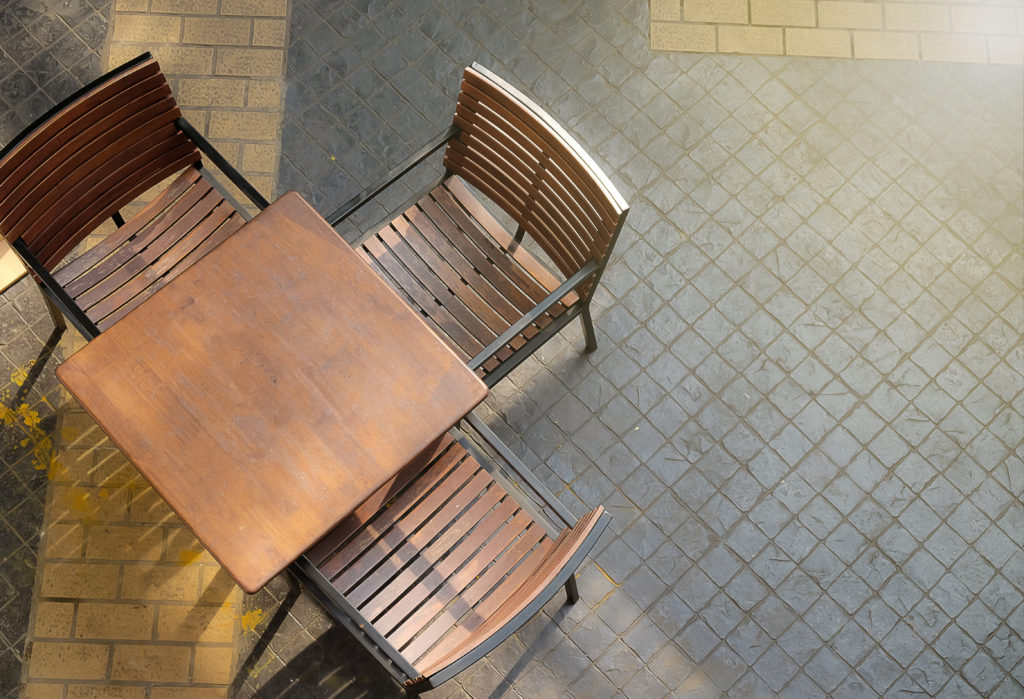
There’s something about a stone patio that just feels so right. While natural stone doesn’t come cheap, it’s super durable and long-lasting, and the finished product is absolutely gorgeous. You can opt for straight-cut stone for a more uniform look or play up stone’s natural variation with irregular shapes.
Pro tip: integrate with your landscape by using locally-sourced stone
You can save money while promoting sustainability by choosing a stone flooring type that comes from the local landscape. In addition to saving on transportation costs and emissions, local stone is an outdoor flooring option that creates a naturally cohesive look. Talk to your local flooring store to see what types of stone they have available.
#6. Brick & Concrete Pavers: Quick and Easy Outdoor Flooring Options
Creating a driveway may require professional installation, but you don’t need to google “how to replace flooring” to use brick or concrete pavers. These inexpensive materials can make an elegant and long-lasting walkway or garden path in a snap. You can find a single brick paver for less than 60 cents, and prices generally range from $1 to $5 per square foot. You can even recycle bricks and stone from other projects!
Pavers are low-prep and low-maintenance
With a little determination, you can create a DIY walkway using a few simple tools over the weekend. Once your pavers are laid and the gaps are filled with sand (polymeric sand is the most durable), maintaining your paver walkway is a breeze. Simply sweep fallen leaves and other debris to prevent slipping and staining, and use a hose to wash away grit and grime as needed.
#7. Rubber Tile: Durable and Affordable
Sure, rubber might not be the first material that comes to mind when you’re thinking about outdoor flooring, but don’t write it off just yet. Why? Rubber tile offers durability, slip-resistance, and shock absorption. Some types of rubber pavers mimic the look of stone, brick, or asphalt, and can start as low as $2 per square foot.
Rubber tile is one of the best outdoor flooring options for kids
Back in the day, we fell off the swingset onto spikey gravel and splintery wooden mulch. These days, kids are enjoying softer, gentler surfaces on the playground—and we think that’s a good thing! Rubber tile is some of the best of the best outdoor flooring for kids. Look for rubber tile that’s highly rated for shock absorption for jungle gyms and other areas where kids run and play.
#8. Artificial Grass: Lawns Without the Lawnmower
They say the grass is always greener on the other side, but what if you had the greenest grass in town, without all the hard work that goes into it? When you really think about it, artificial grass versus the real deal is a lot like the laminate vs. hardwood floor debate—everyone likes the natural look, but many want a low-cost, low maintenance alternative that makes their lives easier.
Fake turf is a great outdoor flooring option for allergy sufferers
Seasonal allergies can be truly debilitating, as many of us know. Peak grass pollen season naturally coincides with the time of year when you want to be outdoors the most: late spring to early summer.
Some allergy sufferers (and others who struggle to mow the lawn) are compelled to hire landscapers, which can cost an arm and a leg. Adding artificial grass is a one-time expense that could save you money and a few hundred ACHOOs down the line. No mowing, seeding, fertilizing, or sprinklers required!
#9. Concrete: Classic and Customizable
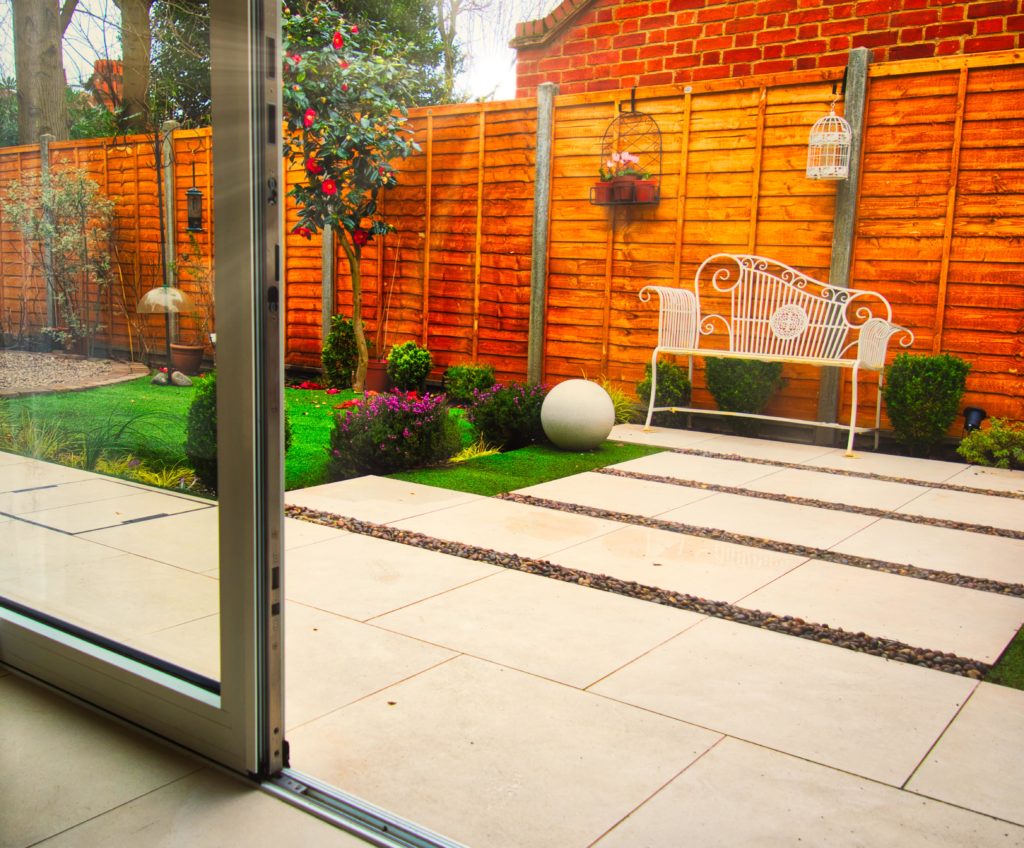
Concrete is one of the most common types of flooring in any outdoor space—and for good reason. It’s inexpensive, easy to maintain, and it lasts forever. Basic poured concrete can cost roughly $4–6 per square foot. Concrete pavers are another (slightly more expensive) option. Just because it’s commonly used, though, doesn’t mean you should get rid of it. You wouldn’t take on the extra cost to replace carpet with hardwood if you liked the flooring you had, would you?
Concrete offers a wide range of design options
Some say boring; we say “blank canvas”! Concrete doesn’t just have to look like… well, concrete. It can be painted, stained, and made to look like natural stone, tile, or even wood. Seriously! Concrete flooring that looks like wood is a thing, and it’s gorgeous.
It can be burnished or stamped… you could even apply a metallic-finished non-slip epoxy resin, if that’s your scene. Concrete is the chameleon of the flooring world.
#10. Gravel: One of the Best Outdoor Flooring Options for Tricky Landscapes
Outdoor flooring installation can be a pain, and if you have a unique landscape, it can be even trickier. Gravel makes a great do-it-yourself flooring choice because it requires very little prep work and it can be shaped to form-fit your terrain.
Add landscape fabric to prevent weeds
One of the qualities that’s so desirable with gravel is that it can simply be placed on top of the existing earth, almost like an outdoor floating floor. And just as one of the common disadvantages of floating floors is that whatever is underneath will impact the flooring above, the same concept applies to gravel!
With that in mind: if you want to prevent weeds from sprouting up inside your gravel drive or walking path, there’s a simple solution: simply lay down landscape fabric to act as a sort of outdoor subfloor first. If you’re not yet familiar with the virtues of subflooring, check out our article What is Subflooring?.
#11. Ground-Cover Plants: Go Green!
Yeah, we know, plants are OBVIOUSLY already outside. You might think that plants don’t belong on our list of best outdoor flooring options, but we beg to differ. And we’re not just talking about grass, either. There are a number of ground cover plants that you can use to beautify your outdoor space while positively contributing to your ecosystem. Some great plants to use as outdoor flooring include:
- Japanese Pachysandra
- Deadnettle
- Creeping Phlox
- Candytuft
- Canadian Anemone
Why do plants make some of the best outdoor flooring?
There are so many good reasons that plants make good outdoor flooring options. You may, for example, have a steep slope on your property that’s difficult to mow—make your life easier with easy-to-maintain ground cover plants rather than grass!
Some plants are hardy enough to survive being walked on regularly and could eliminate the need for mowing altogether, making them a fantastic low-maintenance alternative to grass. Want to support your fellow creatures? Flowering plants are an excellent food source for bees, butterflies, and other animals. Shade-loving plants can even cover up unsightly bare patches under shady trees.
#12. Foam Tile: Springy and Comfy
There are so many fantastic types of tile out there, it’s hard to pick just one. New and unique flooring innovations are making tile even better than it already was. For example, while click-lock flooring used to be reserved mainly for engineered hardwood and laminate, manufacturers are now making snap-together tile flooring.
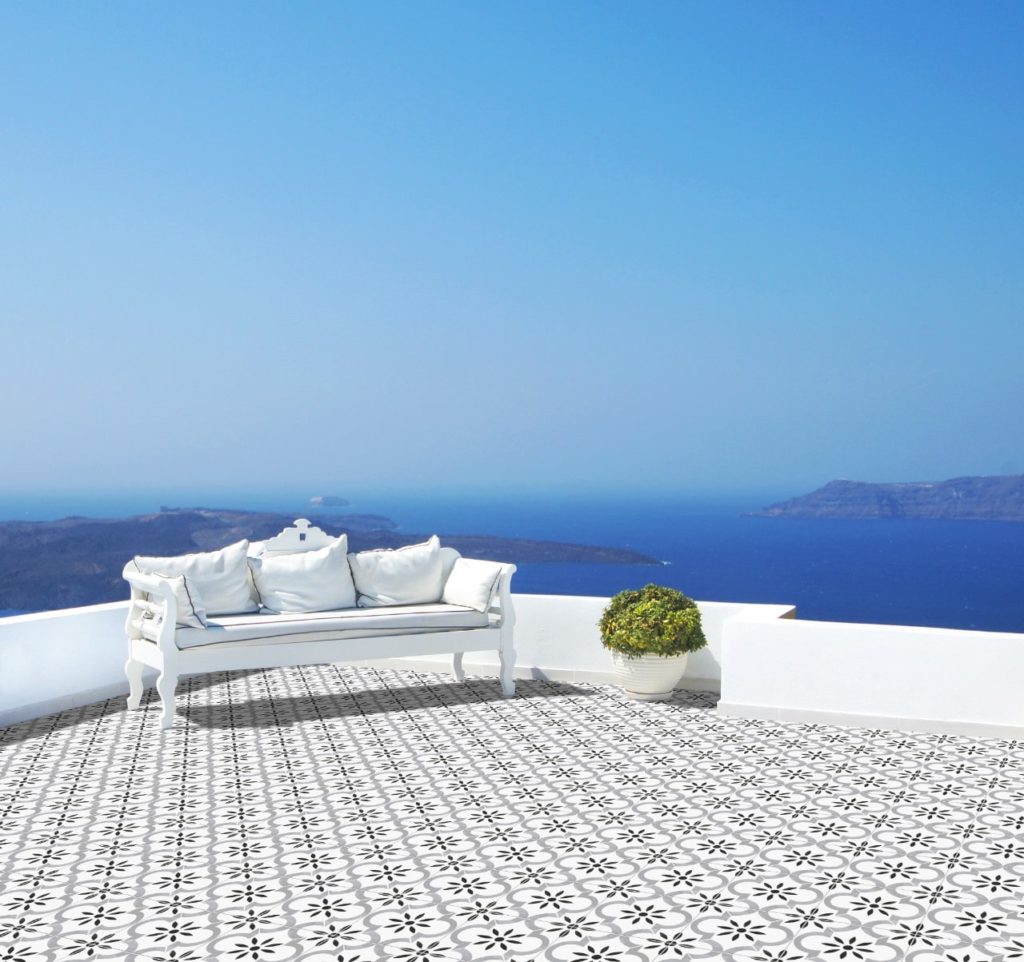
Foam tile is one of these new (amazing) innovations. Whether you have kids or whether you’re just young at heart, this type of flooring is soft, springy, and perfect for somersaults. In this way, it’s similar to the best cork flooring, but without all the pesky disadvantages of cork flooring. It’s also great for backyard picnics, and it’s so lightweight and convenient, you can easily transport and install foam tiles all by yourself.
#13. Artificial Grass Tile: Movable and Cozy
We’ve already discussed the virtues of artificial grass, but did you know that some artificial grass is sold in tile form? If you’re planning on adding this unique type of flooring to a smaller area, like a rooftop or interior courtyard, save yourself the trouble and expense of buying a large roll and opt for smaller tiles instead.
#14. Plastic Tile: Versatile and Easy-to-Use
Oh, plastic. Love it or loathe it, plastic is known for being highly durable. It’s nonporous and easy to clean, making it a great outdoor flooring option. If the environmentalist in you scoffs at the mere suggestion, consider recycled or plant-based plastic tile.
#15: Luxury Vinyl Plank: Yes, It Can Even Go Outside!
If you ask us, vinyl plank (aka LVP) is one of the coolest flooring types on the market. It’s durable, it’s beautiful, and the disadvantages of vinyl plank flooring are few and far between.
Want sunroom flooring that looks like wood, but with all the benefits of low-VOC vinyl flooring? These days, the best vinyl plank flooring brands offer products that can be installed anywhere in the home—even 3 season rooms.
Plus, PVC flooring is inexpensive and easy-to-install, too (seriously—the cost to install vinyl plank flooring is surprisingly low).
Just remember: some types of outdoor vinyl flooring are designed for the outdoors, and some are only outdoor-appropriate. Make sure to find the one that works for you!
Choosing Between Outdoor Flooring Options
Now that you have all the info on these outdoor flooring options, you’re ready to make a decision. But how do you choose which product is the one for you?
Honestly? The easiest way to find the best outdoor flooring for your location and lifestyle is to chat with a local flooring expert. They have the experience and professional knowledge to recommend the right types of flooring for you. Use our search tool to find a flooring store in your area!
And for more information on the best flooring types on the market today, check out:
- Engineered Bamboo Flooring: The Pros and Cons
- The 12 Best Hardwood Floor Brands: Real Info & Reviews
- Bamboo Flooring vs. Laminate: Which to Buy?
- Pergo Reviews 2022: What Buyers are Saying
- The Pros and Cons of Cork Flooring
- Your Complete Guide to Bamboo Flooring
- WPC Flooring: Reviews, Best Brands, and More
- 12 Top Waterproof Vinyl Flooring Options
About The Author

Kelly Pitts
May 8, 2020
Kelly is a freelance lifestyle and wellness writer. Her guilty pleasures are coffee and celebrity gossip. When she’s not hard at work creating content, you can find her traveling the world, being a crazy fish mom, and cooking vegan food.
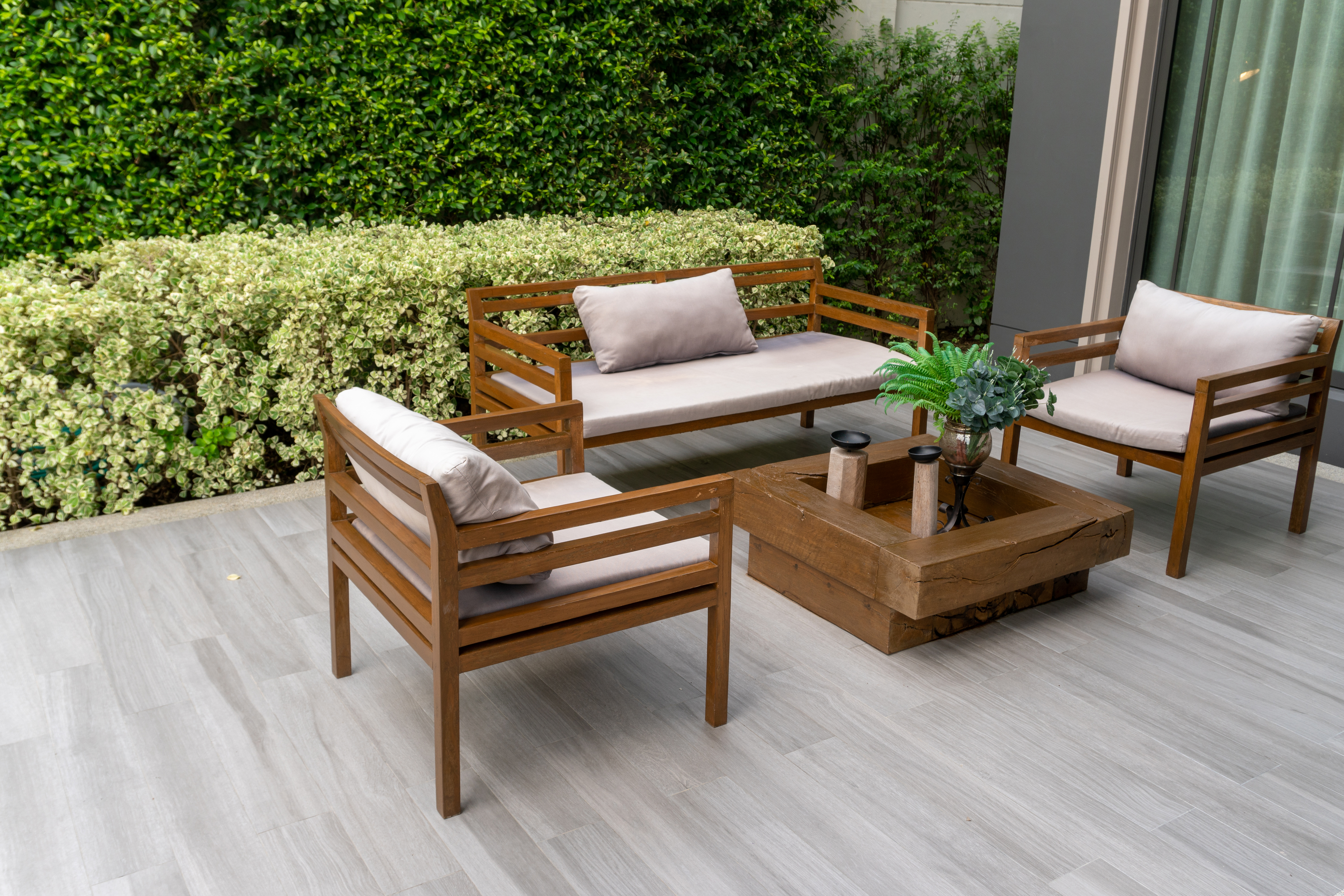
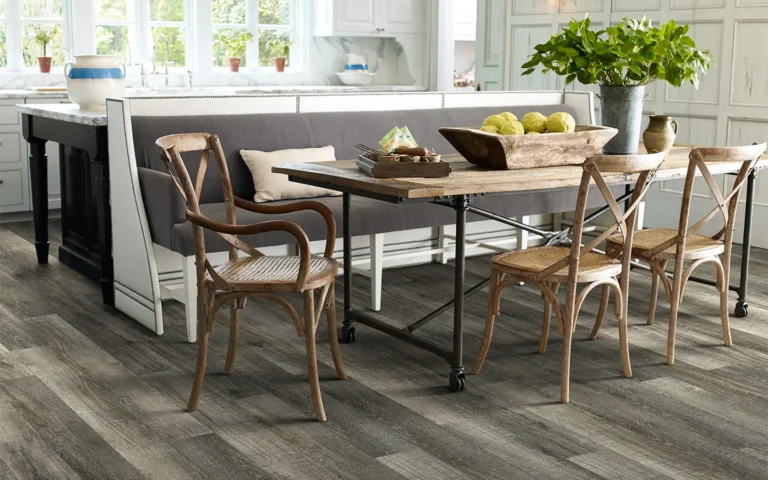

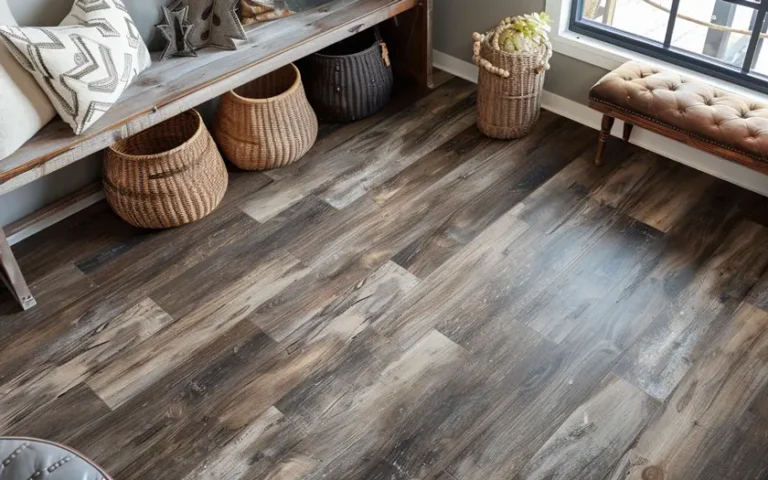

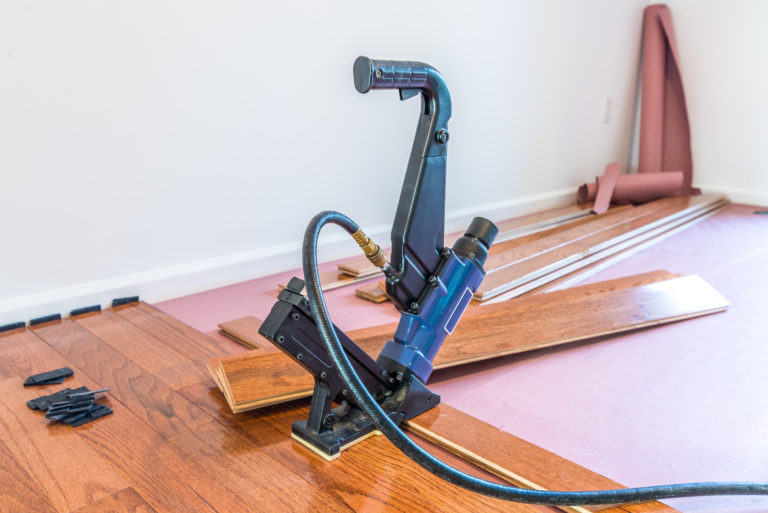

2 comments
Darryl Gebien
Hi Kelly!
Great write up! One thing worth considering is composite deck tiles. They’re similar to their deck board cousins but are much easier to work with and install. They’re also cheaper. We install them almost exclusively (but are not suppliers for retail sales; just installation services).
Hope to hear back from you!
Darryl
Founder, Outdoor Floors in Toronto
Bo Arnold
Hi Darryl!
Thanks for reading, and for your excellent insight! We’ll definitely consider it for future recommendations.
Thanks again!